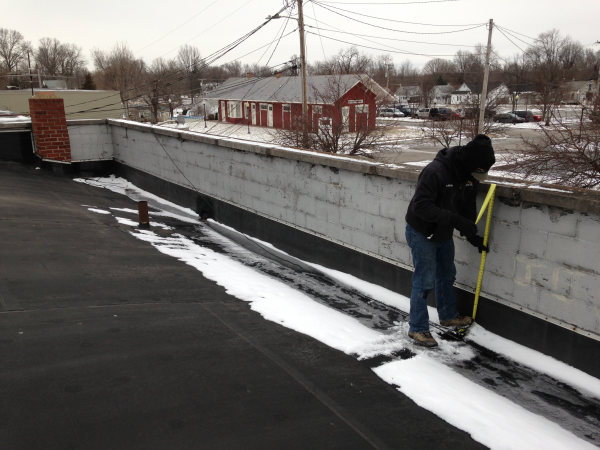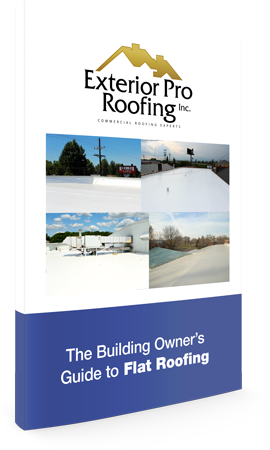Three of the most common single ply membrane materials used for flat roofing is TPO, PVC, and EPDM. Each has its own advantages and disadvantages. While many have their own opinions of which system is better than the others, it really depends on the climate and area of the roofs location as well as the roof itself and how it will be used. Another thing to look into is how the roof material is installed.
The TPO is short for Thermo Plastic Olefin. The installation process can be done or mixed using adhered, mechanically fastened or mopped and the seams are either adhered or hot air welded. TPO is much like the PVC membrane in looks because they both are white and offer energy savings. The TPO can come in many thicknesses from 45 to 80 mil.
EPDM is short for Ethylene Propylene Diene Monomer. The EPDM is more of a rubber material that is mostly black in color though there has been an introduction to a white on black EPDM roof due to cool roofs growing in popularity. The EPDM roof is installed using a glued down but can be mechanically fastened and ballasted also. Sometimes flat roofs with parapet walls will have them ballasted with rock onto of the EPDM.
PVC is short for Poly Vinyl Chloride. A PVC flat roof system has become even more popular in many areas because of the white membrane being so reflective of UV rays. This system is mechanically fastened and sometimes mixed with adhesion and the seams are hot air welded. Depending on the manufacturer this membrane can come prefabricated for your flat roof and its accessories and most seams are welded in factory to lessen the seams that need to be hot air welded. This also comes in many thicknesses ranging from 40 mil to 80 mil.
The TPO and PVC flat roof systems have UV protection built into the materials, EPDM does not offer UV protection. PVC is more flexible than TPO is and so far has shown that it can have a longer lifespan due to its strength and durability. Both TPO and PVC flat roof systems offer resistance to fire and high wind uplifts. They both are also reinforced. Each manufacturer of these materials have a warranty they offer and each varies as well on length of warranty and what the warranty covers.
When deciding on which material you want for your flat roof do some research and asked your roofing contractor to discuss the differences and the pros and cons of each. Here area few questions you might want to consider: 1. Which manufacturer offers the best product? 2. How does the manufacturers warranty fit for your roof needs and what does it cover? 3. How do you think each roofing system will do based on how they are attached (by adhesive, mechanically or taped)? To decide which is better you also need to look at your roof and its needs as well as the area you live and the climate. Some materials do better than others in certain climates. In Southern Indiana we have such a big fluctuation in temperatures that can be hard on roofs and then we have the heavy rains and loads of snow that can also make a difference on your roofing material.







